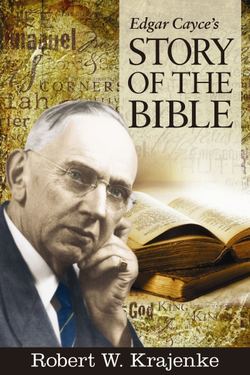Читать книгу Edgar Cayce's Story of the Bible - Robert W. Krajenke - Страница 62
На сайте Литреса книга снята с продажи.
The Only Daughter
ОглавлениеLittle is known of Dinah, Jacob’s only daughter. Her story is told in Genesis 34. Historians dispute its authenticity as a historical fact. The story is viewed rather as an amalgam of many incidents, an allegory of the tribal warfare of that patriarchal age in which women were often defiled by invaders and revenged by their kin. Jewish scholars also question the historical validity of the Books of Ruth and Esther, suggesting they, too, are allegorical in nature. However, the Edgar Cayce readings strongly suggest that in all three cases a historical interpretation is valid. A twenty-four-year-old doctor’s receptionist was told she had been Dinah in a previous existence:
. . . we find the entity was in the Promised Land, during those periods when there was the building of that which was and is a mighty influence in the relationships of man to Creative Forces.
There we find the entity was among the children of Jacob, and the daughter in that experience—one among twelve sons; and she whom Shechem sought, and over which much turmoil to Levi and Simeon was brought, owing to the conditions which arose through those activities as they journeyed in that land from the Arabian.
The entity gained and lost; and there are those experiences that arise accordingly in the present, from the activities in that sojourn—as to its relationships to individuals, owing to the social status, and owing to those conditions which arise in the activities.
Hold fast to that which is the purpose, and the promise. Remember, thou hast the promise within thine own self; and it is not as to who will descend to bring a message, or who would come from over the sea that ye might hear or know. For, Lo, He is within thine own heart, thine own consciousness. In thine own body has He promised to meet thee.
As ye have experienced the awareness of the arousing to healing, know that He is life.15
Then the name was Dinah.
951-4
Although Dinah is generally lost to history, the Edgar Cayce reading traced her progress both before and after her tumultuous experience as Dinah. In the previous life she had been in prehistoric Egypt, at the time of Ra–Ta, the high priest. She was one of his daughters, and served in the Temple Beautiful . . . “for the preservation of those activities in which there was to be rather the pure strain of the pure blood.” Cayce said she rose to power in the Temple Beautiful, but “united” with the influence of the Atlanteans “that brought the children of Belial’s seeking for self-indulgences.”
Her rape by Shechem and the bloody retribution by Simeon and Levi could possibly have been karmic in nature, a result of this Egyptian life.
